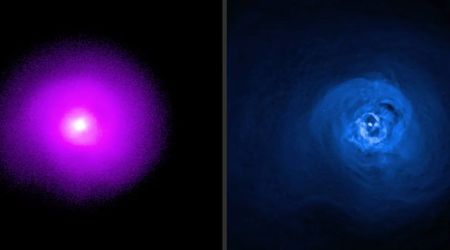'Baby pictures' showing the universe when it was about 380,000 years old take the internet by storm

The universe is billions of years old and has nurtured every iota of life that is observed within its bounds. The universe contains a massive amount of history that is beyond human comprehension. This was attested by astronomers when they released the ‘baby pictures’ of the universe when it was only 380,000 years old, as per Phys Org. These were produced by an international team of astronomers who measured the light that traveled 13 billion years to reach a telescope in the Chilean Andes. This light is known as the cosmic microwave background (CMB).

The images of the infant universe were captured by the Atacama Cosmology Telescope (ACT). It had amazing clarity and unveiled the earliest light after the Big Bang, along with the first steps towards forming new stars and galaxies. This image was the best source to analyze the standard model of cosmology and learn about the intensity and polarization of the earliest light. It showed the motion of gases in the universe as they were pulled by gravity. This infancy image of the cosmos could be compared to the pictures of a baby who was just born and only a few hours old.

"We have produced two images of the very early universe from a time long before there were any stars and galaxies, when all of space was filled with an almost perfectly uniform mixture of hydrogen and helium gas, radiation and dark matter," stated Adam Hincks, an assistant professor at the University of Toronto and member of this ACT collaboration. Two images were highlighted by experts to be relaying two different aspects of observation. The first image showed the variation in density of the primary gases, and the second showed their velocity, revealing their dynamics.

“Over millions of years, the slightly denser regions grew under the influence of gravity to form stars and galaxies. So the snapshot shows us the starting point for all of the marvelous structures we see in the universe today,” Hincks commented, as per Phys Org. “We get this map of the movement of the gas by measuring the polarization of the cosmic microwave background (CMB). We have done this to unprecedented sensitivity, giving a much clearer picture of the speed of the gas than was previously available,” he added about the collaborative process.

Before the universe reached 380,000 years of age, and just after the Big Bang, the cosmos was literally a dark place due to extensive heat. It was only when the universe expanded and cooled down that the formation of atoms and scattering of light occurred, as per Space.com. This is seen as CMB today and is one of the most conclusive markers to track the evolution of the universe. "ACT has five times the resolution of Planck and greater sensitivity. This means the faint polarization signal is now directly visible," team member and University of Oslo researcher Sigurd Naess commented.

The results of this finding attest to an existing model of the universe and take out its competitors from the game. The research was originally presented at the American Physical Society annual meeting on 19 March 2025. The papers of the study have been submitted for the process of peer review and are expected to be published in the Journal of Cosmology and Astroparticle Physics. Apart from the model, the new data was also used to confirm the lower value of the Hubble constant. The data from the study preferred a lower value instead of a higher value model.









